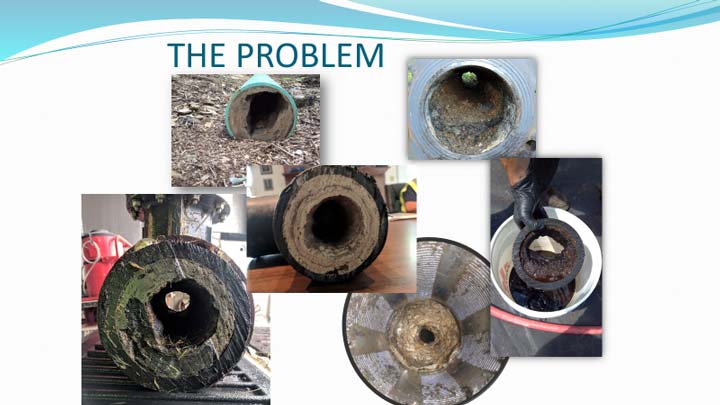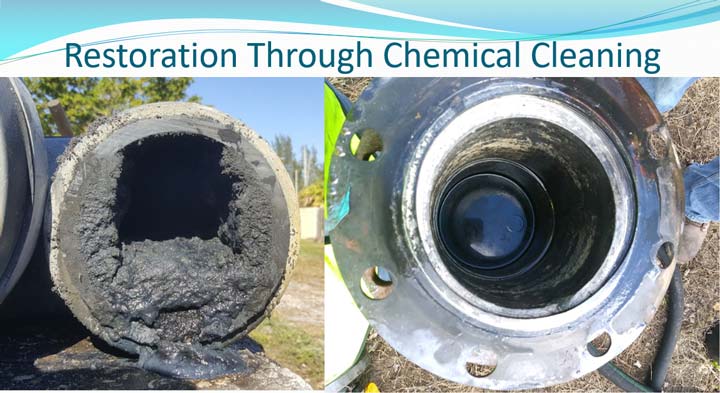Chemical Cleaning in Landfill Liquids Systems
June 14, 2022 by Steve Carl and Manny Hernandez, PE, BCEE
Twelve years of chemical cleaning in the Solid Waste business has been an exercise in learning the nature, size, and causes of the problems in landfill pipes. Progressive Environmental Services’ experience came from 15 years of chemical cleaning for the US Navy and applying the same principles for cleaning an aircraft carrier to a landfill. Issues on a ship are much easier to identify and consistent from ship to ship. Landfills, we’ve found, not only are frequently different, but cells within landfills can vary widely.

We spent the first five years cleaning leachate pipes in gravity systems before we even discovered side slope and vertical risers existed. Now risers occupy the large majority of the work and interest is growing in keeping gas systems cleaned to increase collection. One of our larger challenges is getting data after we complete a job to measure results. Only recently have we been able to work with customers to follow increases in gas production in removal of leachate after cleaning. Landfill gas wells close to the worksites have seen increases in collection of 30 percent. We are continuing to follow those results to see how long they last and we are working with other landfills to start collecting the data.
We are often asked to perform cleaning on condensate lines and gas wells but discourage it unless the leachate collection system under the wells is cleaned first. This is because we are finding a lot of leachate stacked up, in the one hundred to two hundred inch range, at the bottom and believe it is best to get this removed before cleaning the wells. We’ve also found large increases in gas production where the gas system is tied into the leachate collection risers and we get the leachate lines and sumps cleared.

In addition to moving from gravity systems to adding risers, we’ve also seen the change from only hard scales to what most everyone is calling “Goo” or “Flubber.” This stretched our knowledge of cleaning chemistries into areas we had not been before. And like most things, what we found is not all Goo and circumstances are the same. Caught early, there is a lot more liquid component of the Goo, which is easier to get into solution than, let’s call it Aged Goo, where it is harder and less liquid. Again, we thought our original encounters might be a rarity only to find our industry is finding Goo everywhere.
We have had multiple conversations with Dr. Craig Benson who has been funded through EREF to determine everything there is to know about Goo. Thus far on multiple sites across the US and Canada Dr. Benson is reporting close chemical similarity between all of the Goo collected. This is consistent with what we have seen in the field except for the hardening of Goo as sites struggle with it at the pumps.
Sooner is better if we can get cleaning. More to come!







Leave a comment